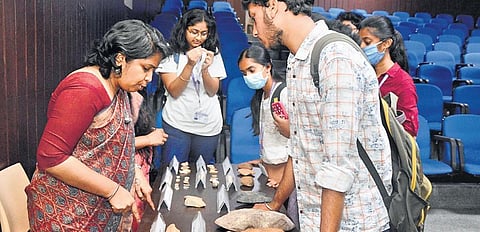

HYDERABAD: The facelift of Charminar and UNESCO World Heritage Site Ramappa temple will soon be completed, adding to accomplishments in the Hyderabad circle, Superintendent Archaeologist Smita S Kumar said on Monday. She added that the Central government is planning to set up the Indian Institute of Heritage here soon.
She was delivering an expert talk during a one-day workshop on ‘Significance of ASI excavations’ organised at Gitam School of Social Sciences and Humanities (GSHS) aimed to give an insight into the contributions of the archaeologists of our country.
She said that Archaeology is multidisciplinary and ASI needs young enthusiasts from various fields like engineering, chemistry, history, etc. She also informed the young audience about various academic programs offered in India to become archaeologists.
The new underwater wing, the latest technologies like Geographic Information Systems (GIS), Geographic Penetrating Radar (GPR), and aerial photography prompted curiosity among students who were attending the workshop.
She said that India has 52 archaeological museums and six excavation centres. Her team exhibited the palaeolithic stone weapons from the first Stone Age, and other artefacts of the Neolithic period. She also mentioned the activities carried out by the ASI — the expeditions and their processes. She also talked about challenges faced by the department.
Ramappa temple, Charminar facelift
During the event, the top archaeologist said that the facelift of Charminar and Unesco site Ramappa temple are going on briskly and that the work will be completed soon.